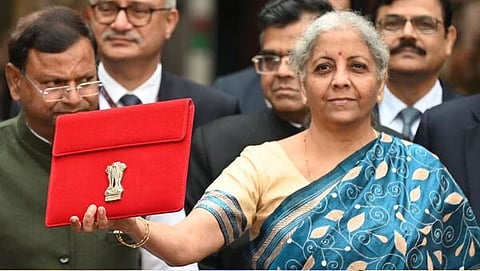

# C. A. Hemant Jain
Bhopal | Finance Minister Nirmala Sitharaman presented her Sixth Budget in Parliament on February 1, 2024. Another Smart abbreviation play – focus on new definition of GDP i.e Governance ,Development and performance. No change in taxes so far, this is an interim budget in letter as well as spirit — unlike the 2019 one. Perhaps a sign of the government’s confidence that “all is well”
Finance Minister said and asserted that their needs, aspirations and welfare are "our highest priority". There is a need to focus on "four major castes" that are "Garib" (the poor), "Mahilayen" (women), "Yuva" (the youth) and "Annadata" (the farmer).
The Interim Union Budget 2024 has prioritised the betterment of the economically weaker sections, women, farmers and the youth, recognising their crucial role in nation building. The pledge to build an additional two crore houses in the next five years under the PM Awas Yojana Grameen is laudable. It underscores the government’s commitment to ensuring housing for all. Sitharaman's announcement of an upcoming scheme targeting the middle class, especially those living in rented houses, slums, and unauthorized colonies, is a positive stride towards inclusive growth. Anticipating a comprehensive roadmap for Viksit Bharat in the Full Budget this July, we believe it will reinforce the government's dedication to economic development and welfare."
The budget also focused on fiscal consolidation, infra, agri, green growth, and railways. The Fiscal Deficit target for FY25 was set at 5.1 percent of the GDP, better than expected, while the FY24 target was also revised down to 5.8 percent. Meanwhile, the capex target of FY25 was increased by 11.1 percent to ₹11.1 lakh crore.
This Budget has continued to focus on strengthening of domestic macro factors including sustained investments in Infra, Agriculture, Domestic Tourism, and also sticking to fiscal responsibility with a lower fiscal deficit which could be music to the ears of foreign investors and impending $25 billion bond inclusion in June as lower budget deficits and pared borrowings will help bring down yields.
The Key Blue Print points towards first budget are as follows:
Ø No changes in tax rates in direct and indirect taxes including import duties,
Ø ‘Will withdraw all pending tax demands up to ₹25,000 till 2009-10 and ₹10,000 till 2014-15.
Ø Budgetary support announced for the free rooftop solar installation scheme (for 10 million houses)
Ø Enhance the target for ‘Lakhpati Didi’ from 2 crore to 3 crore.
Ø Implementation of 3 major railway corridor programmes under PM Gati Shakti-to improve logistics efficiency and reduce cost.
Ø Promotion of foreign investment via bilateral investment treaties to be negotiated
Ø Expansion of existing airports and comprehensive development of new airports under UDAN scheme
Ø emphasizes focus on: poor, women, the young, and farmers.
Ø Tech-savvy youth - A corpus of Rs 1 lakh crore will be established with 50-year interest free loan provided. The corpus will provide long term financing and re-financing with long tenures at low or nil interest rates. This will encourage the private sector to scale up research and innovation significantly in sunrise domains.”
Ø A new scheme will be launched for strengthening deep tech technology for defence purposes and expediting atma nirbharta,
Ø plans to set up more medical colleges through utilisation of the “existing hospital infrastructure under various departments.
Ø Encourage Cervical Cancer Vaccination for girls (9-14 years), Health cover under Ayushman Bharat scheme to be extended to all ASHA, Angawadi workers and helpers
Ø Government will promote private and public investment in post-harvest activities, Application of Nano-DAP to be expanded in all agro-climatic zones
Conclusion
Summing up the whole Budget we may name it as:
A Road map towards making India “VIKSIT BHARAT by 2047 WITH SABKA SAATH SABKA VIKAS AND SABKA VISHWAS
CA. Hemant Jain
[B.Com, F.C.A., DISA, FAFD and Certified Arbitrator]
